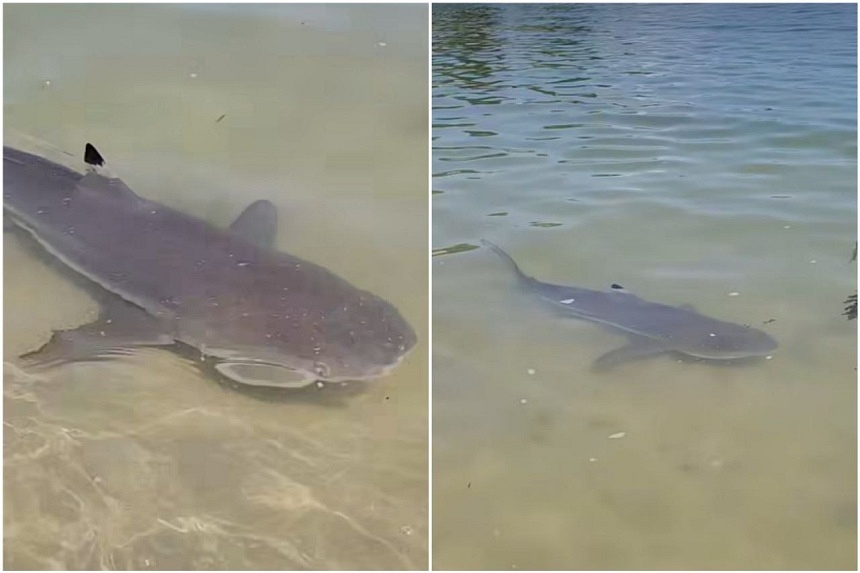SINGAPORE – It was not quite the 8m-long great white seen in the classic film Jaws, but a 1.5m-long blacktip reef shark sighted near the shoreline at Sentosa’s Palawan Beach on Sept 1 still sparked a flurry of reactions.
Sentosa temporarily halted swimming and water activities at the beach, resuming only from 9am the next day after drone inspections confirmed that no further sharks were sighted.
In a video of the incident on Sept 1 that surfaced online, beachgoers appear in equal parts intrigued and wary. Men, women and children are seen keeping their distance from the animal, although many are armed with mobile phones, eager to capture a photo or video of it as it glides in the water.
Online, netizens expressed both concern and curiosity about the presence of sharks in Singapore’s waters. Some were worried about the safety of swimmers, while others were fascinated by the rare encounter.
Here’s what you need to know about sharks in Singapore waters.
1. Home to more than just the blacktip reef
According to the National Parks Board’s list of marine fishes, 13 shark species are known to inhabit Singapore waters, said Dr Zeehan Jaafar, a senior lecturer at the National University of Singapore and an expert on marine life.
Aside from the blacktip reef, the other species include the coral catshark, which grows up to 70cm long, and the whale shark, which is between 5m and 10m long, although the longest on record – spotted in the north-western Indian Ocean – measured 18.8m.
2. Most are endangered
Of the 13 known shark species, the Singapore Red Data Book, which provides information such as the scientific and common names, and descriptions of each plant and animal species here, states that seven are critically endangered, five are endangered, and one is data-deficient.
Dr Zeehan said the tiger shark is the species with the data-deficient status because there is only one reported sighting of it – in 1967 – and it has not been seen in Singapore waters since. She noted that there are currently no species-specific conservation efforts for the native sharks.
3. ‘Timid’ shore huggers
The blacktip reef shark is found in shallow reef areas and forages close to the shore, said Dr Zeehan. The species is locally endangered, typically timid and not known to be aggressive. It feeds on smaller fish and invertebrates.
Dr Zeehan added that the blacktip reef shark is native to Singapore, and has always been present in local waters. When compared with other shark species here, they are the most often encountered.
It is normal for some sharks to swim close to the shore. Assistant Professor Benjamin Wainwright from Yale-NUS College said they do this for various reasons, such as hunting for prey, escaping larger predators, or giving birth in the shallower and calmer waters.
4. Maintaining a balance
Sharks play a crucial role in the marine ecosystem. As apex predators, they help maintain the balance of marine habitats. Their presence indicates a thriving marine ecosystem, said Prof Wainwright.
5. Seen one? Keep your distance
If you encounter a shark, keep a distance and do not approach or attempt to capture it. NParks advises members of the public who encounter sharks not to approach or provoke them.
Dr Zeehan advised staying calm and slowly moving away if concerned. Anglers are encouraged to release any sharks they catch.
To minimise encounters with sharks, swim in groups and avoid being the only one in the water, especially at dawn or dusk, when sharks are most active, said Prof Wainwright.
He suggested avoiding swimming in murky water or after heavy rainfall, as these conditions can make it difficult for sharks to recognise what they are seeing.

